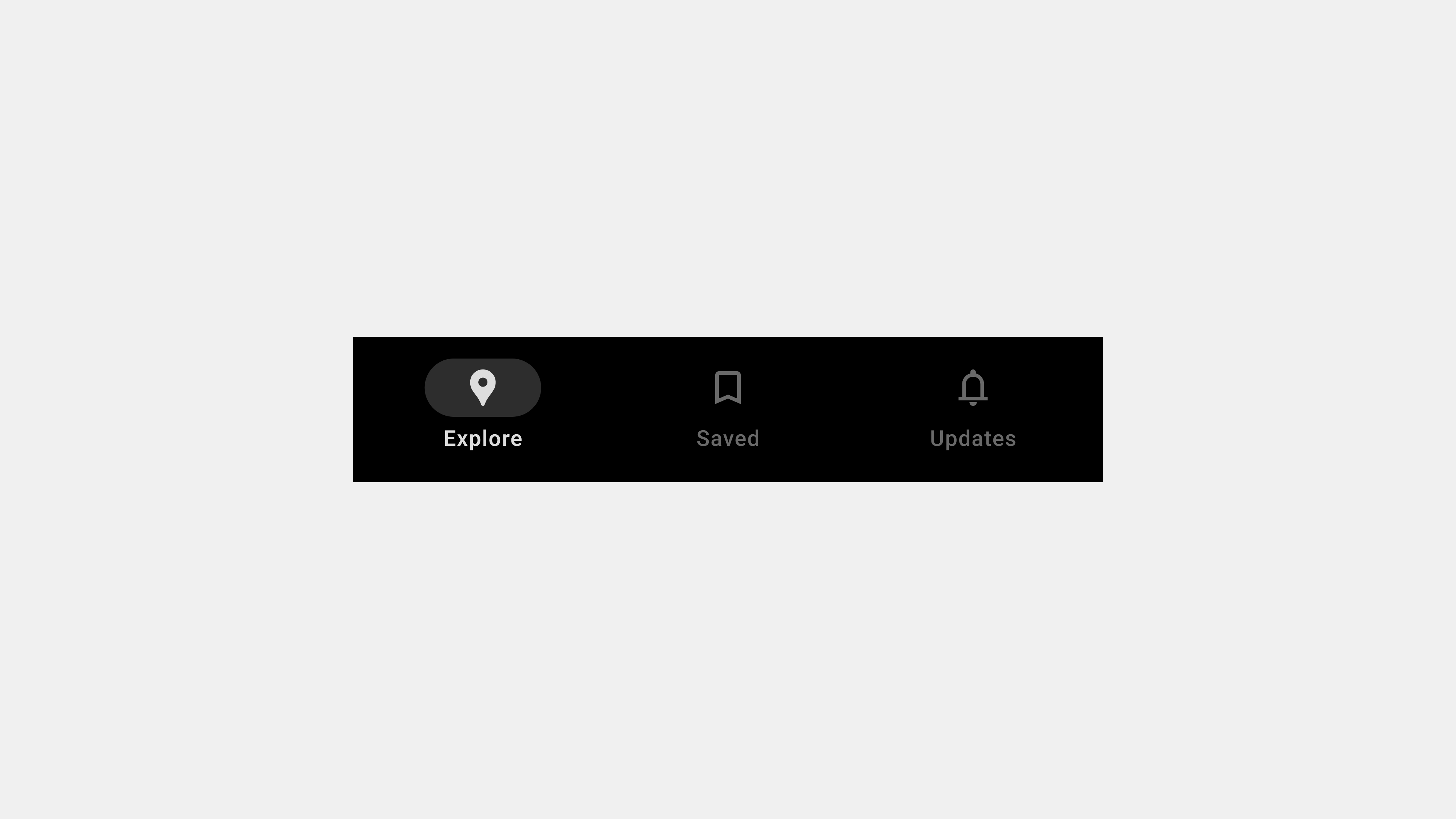Exploring the Definition and Role of Bottom Navigation Bars in UI/UX Design
Bottom navigation bars are a cornerstone of mobile app design, providing users with intuitive and efficient access to an app’s key features. Positioned at the bottom of the screen, these navigation elements cater to ergonomic principles, making them ideal for one-handed use. This article delves deeper into the definition, purpose, and role of bottom navigation bars, examining their impact on usability and user experience.
1. What Are Bottom Navigation Bars?
A bottom navigation bar is a fixed UI element located at the bottom of a mobile app screen, used to navigate between primary app sections or features.
Key Features
- Placement: Always positioned at the screen’s bottom for easy reach.
- Tabs: Typically contains 3-5 options, each representing a primary app section.
- Visual Feedback: Highlights the active tab using colors, icons, or animations.
Purpose
Bottom navigation bars are designed to simplify navigation, ensuring that users can access core features with minimal effort. They enhance user experience by providing a consistent and predictable navigation structure.
2. The Role of Bottom Navigation Bars
Bottom navigation bars are not just a navigation tool; they play a crucial role in shaping the overall user experience.
A. Enhancing Usability
Bottom navigation bars improve usability by grouping the most important app features into one easily accessible area.
Why It Matters
- Reduces the number of steps required to navigate between sections.
- Simplifies app interaction, especially for new users.
Example
In an e-commerce app, tabs like “Home,” “Cart,” and “Profile” allow users to quickly switch between shopping and account management.
B. Supporting Ergonomics
Positioned for thumb-reach accessibility, bottom navigation bars cater to natural hand movements, making them particularly effective for one-handed use.
Why It Matters
- Enhances comfort and ease of use.
- Reduces strain by placing key features within easy reach.
Example
Social media apps like Instagram use bottom navigation bars to ensure seamless interaction, even on larger screens.
C. Facilitating Discoverability
By prominently displaying core features, bottom navigation bars help users discover essential app sections without searching through menus.
Why It Matters
- Drives engagement with key app features.
- Improves user retention by showcasing the app’s value.
Example
A streaming app with tabs like “Home,” “Search,” and “Library” ensures users can find content quickly.
D. Providing Contextual Awareness
Active state indicators in bottom navigation bars inform users of their current location within the app, reducing confusion.
Why It Matters
- Helps users stay oriented.
- Enhances confidence in navigation.
Example
In a travel app, highlighting the “Bookings” tab when viewing reservations provides clear context.
E. Encouraging Task Efficiency
Bottom navigation bars enable multitasking by allowing users to switch between tasks without losing progress.
Why It Matters
- Streamlines workflows.
- Reduces frustration by preserving state within tabs.
Example
In a project management app, users can toggle between “Tasks” and “Calendar” without losing data.
3. Benefits of Bottom Navigation Bars
A. Simplicity and Focus
- Encourages minimalism by displaying only essential features.
- Keeps the interface clean and user-friendly.
B. Consistency
- Provides a uniform navigation experience across screens.
- Reinforces a cohesive app identity.
C. Speed and Efficiency
- Reduces the time required to find and access features.
- Improves task completion rates.
4. Best Practices for Designing Bottom Navigation Bars
A. Prioritize Core Features
Include only the most frequently used app sections.
Example
For a fitness app: “Dashboard,” “Workouts,” “Progress,” and “Settings.”
B. Use Intuitive Icons and Labels
Pair icons with short, descriptive labels to clarify their purpose.
Example
A music app can use a play icon labeled “Playlists” and a search icon labeled “Search.”
C. Optimize for Accessibility
Ensure navigation bars are inclusive and meet accessibility standards.
Tips
- Add ARIA roles for screen reader compatibility.
- Use high-contrast colors for better visibility.
D. Provide Visual Feedback
Use animations or style changes to highlight active tabs and interactions.
Example
In a photo-sharing app, a color change for the “Upload” tab after tapping reinforces user action.
E. Test Across Devices
Ensure navigation bars function seamlessly across devices and orientations.
Example
A responsive design for a video app ensures usability on both phones and tablets.
5. Challenges in Designing Bottom Navigation Bars
A. Overcrowding
Adding too many tabs can overwhelm users.
Solution: Limit to 3-5 tabs and use overflow menus for secondary features.
B. Ambiguous Labels or Icons
Unclear or unfamiliar labels can confuse users.
Solution: Use universally recognized icons and test labels with real users.
C. Inconsistent Behavior
Navigation bars that behave differently across screens disrupt the user experience.
Solution: Maintain uniform functionality and style.
6. Examples of Successful Bottom Navigation Bars
A. Instagram
- Tabs: Home, Search, Reels, Shop, Profile.
- Why It Works: Combines minimalism with intuitive design.
B. YouTube
- Tabs: Home, Explore, Subscriptions, Library.
- Why It Works: Clearly separates content discovery from user libraries.
C. Spotify
- Tabs: Home, Search, Library.
- Why It Works: Prioritizes simplicity and quick access to core features.
7. Future Trends for Bottom Navigation Bars
A. Gesture-Based Navigation
Replacing traditional taps with swipes for smoother transitions.
B. AI-Powered Customization
Dynamic tabs that adapt to user preferences and behavior.
C. Integration with AR and VR
Navigation systems tailored for immersive experiences.
Conclusion
Bottom navigation bars are more than just a navigation tool—they are a critical element in delivering a seamless and intuitive user experience. By understanding their definition, role, and best practices, designers and developers can create navigation systems that enhance usability and engagement. As mobile app design continues to evolve, bottom navigation bars will remain an indispensable part of the user experience landscape.
